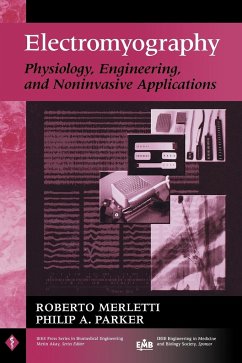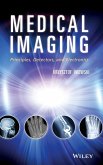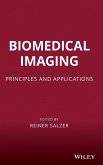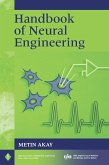Electromyography is the branch of biomedical engineering and physiology that studies electrical signals generated by voluntary or electrically induced muscle activation. Bridging the gap between engineering and physiology, this pioneering volume explains the essential concepts needed to detect, understand, process, and interpret EMG signals using noninvasive electrodes, also known as surface EMG. It covers noninvasive applications in such areas as neurology, ergonomics, exercise physiology, movement analysis, rehabilitation, biofeedback, and myoelectric control of prostheses.
A complete overview of electromyography with contributions from pacesetters in the field
In recent years, insights from the field of engineering have illuminated the vast potential of electromyography (EMG) in biomedical technology. Featuring contributions from key innovators working in the field today, Electromyography reveals the broad applications of EMG data in areas as diverse as neurology, ergonomics, exercise physiology, rehabilitation, movement analysis, biofeedback, and myoelectric control of prosthesis.
Bridging the gap between engineering and physiology, this pioneering volume explains the essential concepts needed to detect, understand, process, and interpret EMG signals using non-invasive electrodes. Electromyography shows how engineering tools such as models and signal processing methods can greatly augment the insight provided by surface EMG signals. Topics covered include:
_ Basic physiology and biophysics of EMG generation
_ Needle and surface electrode detection techniques
_ Signal conditioning and processing issues
_ Single- and multi-channel techniques for information extraction
_ Development and application of physical models
_ Advanced signal processing techniques
With its fresh engineering perspective, Electromyography offers physiologists, medical professionals, and students in biomedical engineering a new window into the far-reaching possibilities of this dynamic technology.
A complete overview of electromyography with contributions from pacesetters in the field
In recent years, insights from the field of engineering have illuminated the vast potential of electromyography (EMG) in biomedical technology. Featuring contributions from key innovators working in the field today, Electromyography reveals the broad applications of EMG data in areas as diverse as neurology, ergonomics, exercise physiology, rehabilitation, movement analysis, biofeedback, and myoelectric control of prosthesis.
Bridging the gap between engineering and physiology, this pioneering volume explains the essential concepts needed to detect, understand, process, and interpret EMG signals using non-invasive electrodes. Electromyography shows how engineering tools such as models and signal processing methods can greatly augment the insight provided by surface EMG signals. Topics covered include:
_ Basic physiology and biophysics of EMG generation
_ Needle and surface electrode detection techniques
_ Signal conditioning and processing issues
_ Single- and multi-channel techniques for information extraction
_ Development and application of physical models
_ Advanced signal processing techniques
With its fresh engineering perspective, Electromyography offers physiologists, medical professionals, and students in biomedical engineering a new window into the far-reaching possibilities of this dynamic technology.
"...the best single reference book currently available in the field..." ( Annals of Biomedical Engineering , November 2005)
"...the authors successfully reported...the unknown aspects of electromyography, in particular the non-invasive approaches to the neurophysiological monitoring of the central nervous system." ( Doody s Health Services )
"...the authors successfully reported...the unknown aspects of electromyography, in particular the non-invasive approaches to the neurophysiological monitoring of the central nervous system." ( Doody s Health Services )








